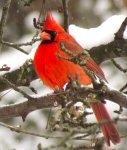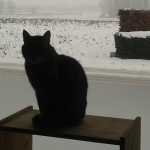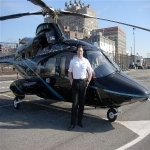Please be aware this is a forum that welcomes newbies. We were all there once. Even if you see negative posts by a troll here, there is still plenty of good information on the forum.
We hope the trash will be appropriately removed, however, if you see some, please try to ignore it for now, sit back and start learning.
I will try to maintain all the links and information in this first post - the rest of the thread will be comments and originals of things I copied to this post.
This is a post where you can start gathering information for this journey. If you want to get answers for a problem you have or want to introduce yourself. please start a new thread/topic. Later on I have posted a photo of the button to push to start one.
Jules
--------------------------------------------------------------------------
Understanding OSA - worth your time
http://www.resmed.com/en-au/clinicians/ ... 40x380.swf
Read the area called New Users at the top of the page
The man with green jacket icon found at the top of the page http://www.cpaptalk.com
Read the area called Our Wisdom -
The yellow light bulb found at the top of the page http://www.cpaptalk.com (next to the man with the green jacket) - on the previous version of this board this was called "Our Collective Wisdom"
For Acronyms & Definitions -
http://www.sleepnet.com/definition.html
also look at the list provided by Snoredog later on this post
Sleep Lab Video by cpap.com
sleeplabvideo
Learn to search
use Google & the syntax "search words" site:http://www.cpaptalk.com,
use search above for a single word,
or use "advanced search" with several words
Rested Gal has collected links to many common topics
such as batteries, hose hangers, mask fixes
viewtopic.php?t=17435
Panic Attacks with CPAP - check this link that DSM found
http://mindpub.com/PanicAttacksinCOPD_chapter4.htm
Some Helpful Hints and Shopping List
viewtopic/t14746/viewtopic.php?p=124233
viewtopic/t14746/viewtopic.php?p=251830
Problems adjusting? This is a document from Respironics to promote bipap when cpap fails. It includes some flowcharts and worksheets that might help anyone with problems.
http://sleepapnea.respironics.com/clini ... aph[1].pdf
-----------------------------------------------------------------------------------
This is information others have added in this thread that I copied here.
papdad wrote:
Another link: Approach to the Patient With a Sleep or Wakefulness Disorder
http://www.merck.com/mmpe/sec16/ch215/ch215b.html
ozij wrote:
This is about understanding the mouthleak cycle
http://www.resmed.com/en-au/clinicians/ ... clinicians
And this helps in undertanding Resmed's way of looking at obtructions.
http://www.resmed.com/en-au/clinicians/ ... clinicians
jnk wrote:Found this to help me understand "awakenings":
http://www.sleepapnea.org/about/archive ... rw2006.pdfAROUSALS & AWAKENINGS
Arousals – interruptions of sleep lasting 3 to 15 seconds – can occur spontaneously or as a result of sleep disordered breathing (SDB) or other sleep disorders. Each arousal sends you back to a lighter stage of sleep. If the arousal last more than 15 seconds, it becomes an awakening. You are usually not aware of arousals, but may be aware of awakenings.
This post has been edited to include all additional info mentioned in the rest of this thread.--JulesSnoredog wrote:
DEFINITIONS:
APNEA = cessation of airflow for 10 seconds or greater.
HYPOPNEA =>50% decrease in airflow for 10 seconds or greater with a decrease in oxygen saturation of >3%.
APNEA/HYPOPNEA INDEX (AHI) = apnea plus (+) HYPOPNEA/hour of sleep.
RESPIRATORY AROUSAL INDEX (RAI) = AHI +snoring related EEG arousals/hour of sleep.
AHI/RAI** Scale =<5 events /hour = (none); 5-15 events/hour = (mild); 15-30 events/hour = (moderate); >30 events/hour = (severe).
Respiratory related sleep fragmentation: Sleep arousals due to respiratory events or snoring.
Desaturation = Drop in O2 oximetry distribution saturation by 3% below average saturation.
SaO2 scale: >89%=(none); 85-89%=(mild);80-84%=(moderate); <80% (severe).
EPWORTH SLEEPINESS SCALE =<10=(does not indicate EDS (Excessive Daytime Somnolence));10-15=(indicates daytime somnolence-not excessive);>16 (indicates EDS).
RESPIRATORY EFFORT RELATED AROUSALS (RERAs)=Sleep Arousals due to respiratory events characterized by pressure flow limitations in the airflow indicator channel without significant O2 desaturations.
StageIII and StageIV are combined and referred to as Deep Sleep.
Sleep Efficiency = Normal is >80%
As established by AASM/ABSM 1999.
Normal Sleep Architecture:
Stage1: 5%
Stage2: 50%
Stage3: 10%
Stage4: 10%
Stage REM: 25%
Stage3&4, REM decrease as we age.
Stuff seen on a PSG Report:
Arousal: An interruption of sleep lasting greater than 3 seconds.
BR Arousal index: The number of breathing related arousals(apnea, hypopnea, snoring & RERAs)multiplied by the # hours of sleep.
Bruxism: Grinding of the teeth.
Central apnea: A respiratory episode where there is no airflow and no effort to breathe lasting greater than 10 seconds.
EEG/EOG: Comments about sleep stages, brain waves (EEG), or eye movements (EOG)
EKG/ECG: Comments about heart rate, abnormal heart beats, etc.
EMG: Comments about leg movements and or teeth grinding (bruxism).
Hypopnea: A respiratory episode where there is partial obstruction of the airway lasting greater than 10 seconds. Also called partial apnea or hypo-apnea.
Non-supine: Sleeping in any position other than on the back.
NSR: Normal sinus rhythm.
NPSG: Nocturnal Polysomnogram, or sleep study.
(#)Number of Awakenings: The number of pages scored as wake after sleep onset.
Obstructive apnea: A respiratory episode where there is a complete cessation of airflow lasting greater than 10 seconds.
PLMs: Periodic limb movements.
PLM arousal index: The number of periodic limb movements that cause arousals multiplied by the number of hours of sleep.
PSGT: Polysomnographic technologist.
REM latency: Latency to REM(dreaming) from sleep onset.
RERAs: Respiratory effort related arousals. Episodes that are not apneas or hypopneas, often related to loud snoring, that generally do not cause a decrease in oxygen saturation.
Respiratory: Any specific comments about respiratory events.
RPSGT: Registered polysomnographic technologist.
Sleep efficiency: Total sleep time multiplied by time in bed.
Sleep latency: The first 30 seconds (one `epoch' of recording time) of sleep.
Sleep onset: The first 90 seconds (3 `epochs) of uninterrupted sleep.
Sleep stage shifts: The number of incidents of sleep stage changes.
Snoring intensity: Level of snoring loudness determined by the sleep technologist. Ranging in degrees from mild to very loud snoring.
Spontaneous arousal index: The number of spontaneous arousals (e.g. arousals not related to respiratory events, limb movements, snoring, etc) multiplied by the number of hours of sleep.
Stage 1: The lightest stage of sleep. Transitional stage from wake. top
Stage 1 shifts: The number of times the sleep stage changed to stage 1.
Stage 2: The first true stage of sleep.
Stages 3/4: The deepest, most restorative sleep.
Stage REM: The dreaming stage; Normally occurs every 60-90 minutes.
Supine: Sleeping on back.
Time in bed: The time in the study from `Lights Out' to `Lights On'.
Total arousal index: Total number of all arousals multiplied by the number of hours of sleep.
Total # of PLMs: The number of leg movements in sleep that last greater than 0.5 seconds.
Total sleep time: Total time asleep.
WASO: Wakefulness after sleep onset.
WNL: Within normal limits.

















